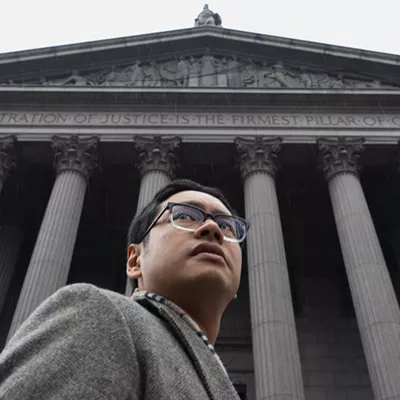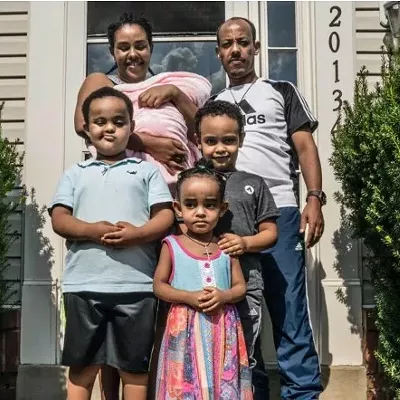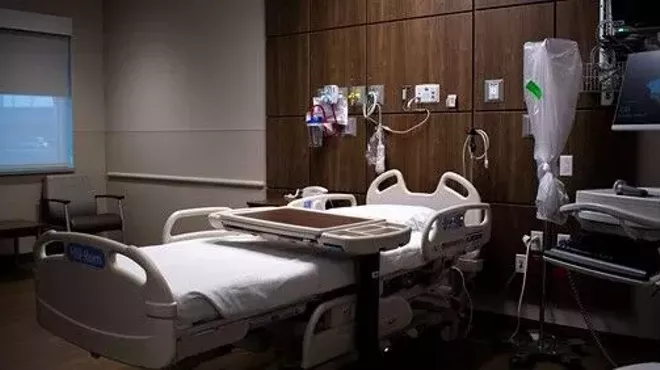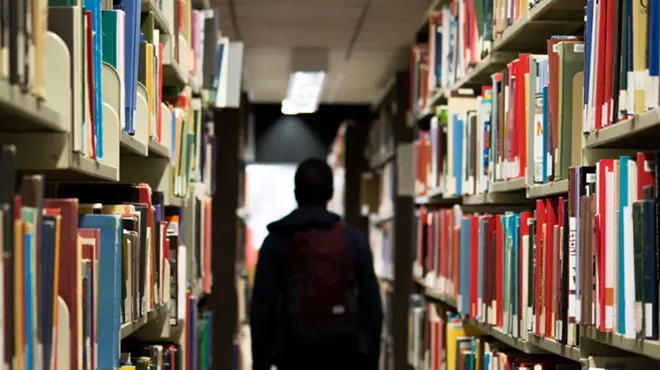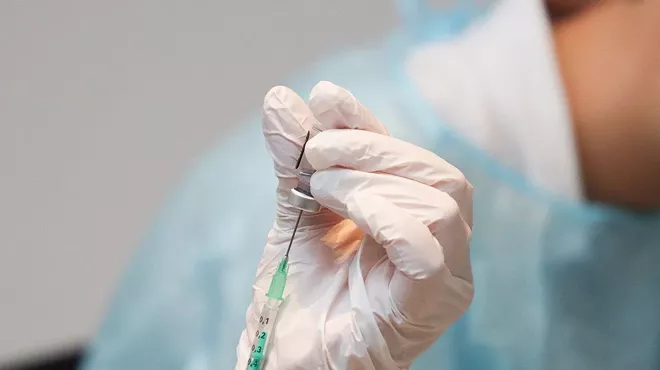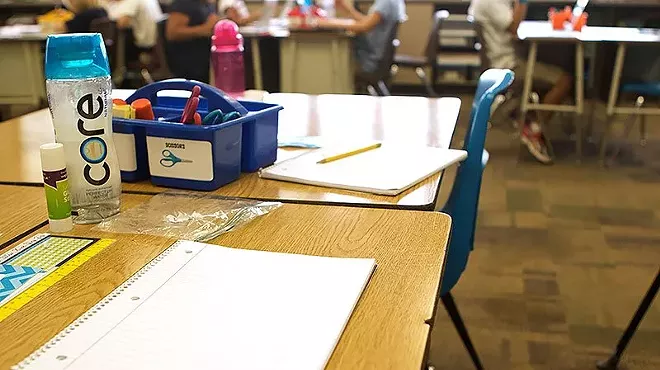Thursday, July 30, 2020
Marana Unified School District Finalizes Back-to-School Plan
The Marana Unified School District governing board today unanimously approved a plan to teach all grade levels remotely when school instruction begins Wednesday, Aug. 5.
MUSD Superintendent Dan Streeter said the district is working with the state Department of Education, the Pima County Health Department, Marana Health Center and other entities to ensure they are adequately prepared to begin the school year.
“Each of the superintendents throughout the county have been meeting with Dr. Cullen and Dr. Garcia and talking about what are those metrics that the governor referenced that make sense for a safe reopening in Pima County,” Streeter told the governing board.
Earlier this week, County Administrator Chuck Huckelberry indicated that he, Health Department Direct Dr. Theresa Cullen and Chief Medical Officer Dr. Francisco Garcia believe school cannot resume in-person before Labor Day, Sept. 7, at the earliest.
While the district’s plan is remote learning-focused, Gov. Doug Ducey’s executive order for reopening schools specifies that each district must have an open learning center by Aug. 17 for “at-risk” students who need a place to go during the day. Special needs students will also have individualized schedules that may differ from the majority of the student body.
MHC Healthcare has been advising the district on what the proper protocols should be if positive COVID-19 cases are present on an MUSD campus, what contact tracing will look like and what the appropriate sanitary and face mask policies should be.
MUSD has also been working with Corgan, a national architectural firm, to perform “journey mapping.” Streeter said this will help the district identify each school’s high traffic areas, frequently touched areas, where hand sanitizer dispenser and handwashing stations should be established, and the best options for classroom layouts with physical distancing.
Streeter said what the district has come up with for the fall semester will be drastically different than what they experienced last spring. He said the spring semester, which was interrupted in March by the COVID-19 pandemic, consisted of emergency teaching. This plan, however, is carefully planned remote teaching.
Assistant Superintendent Kristen Reidy told the governing board this plan was made using parent, teacher and student focus group feedback to find out what needed to be done differently from last year. The remote learning plan will follow regular school hours and be designed to easily transition to in-person learning, once it is safe to do so.
According to Gov. Doug Ducey’s executive order, attendance is still required for remote learning. MUSD will track student attendance through online Zoom meetings, but they will not penalize or track student tardiness.
Teachers are expected to reach out to the families of their assigned students in order to establish a relationship and go over the remote learning process, according to Reidy. The district plans to send out weekly communications to families about the newest developments regarding instruction and COVID-19 protocols.
The district is also looking to strengthen its WiFi connectivity for remote learning. Reidy said a spring 2020 survey allowed MUSD to connect with families who do not have WiFi capability in their homes, so they have a general understanding of who is in need of connectivity ahead of the new school year.
Families of students in grades 5 through 12 also have the option to choose Distance Learning. This curriculum features more than 80 online courses taught by certified online instructors or MUSD teachers through a self-paced model.
All MUSD teachers and staff will have flexibility for returning to work, according to Assistant Superintendent Carolyn Dumler. She said the district is prepared to allow accommodations for those who must “balance the needs of being a teacher and being a parent.” For some, this may mean bringing their school-aged children to the workplace so they can be supervised while teachers do their job.
Dumler said at this time, about 50 percent of teachers are choosing to return to the workplace with no accommodations, another 15 percent are choosing to work remotely from home and others are a combination, meaning they want to bring their kids to school with them or they want to have flexibility to work at school or at home, depending on what their childcare situation looks like.
“Some of them do need to work remotely because of their own health conditions, they are just as committed to doing their professional role,” Dumler told the governing board.
MUSD Superintendent Dan Streeter said the district is working with the state Department of Education, the Pima County Health Department, Marana Health Center and other entities to ensure they are adequately prepared to begin the school year.
“Each of the superintendents throughout the county have been meeting with Dr. Cullen and Dr. Garcia and talking about what are those metrics that the governor referenced that make sense for a safe reopening in Pima County,” Streeter told the governing board.
Earlier this week, County Administrator Chuck Huckelberry indicated that he, Health Department Direct Dr. Theresa Cullen and Chief Medical Officer Dr. Francisco Garcia believe school cannot resume in-person before Labor Day, Sept. 7, at the earliest.
While the district’s plan is remote learning-focused, Gov. Doug Ducey’s executive order for reopening schools specifies that each district must have an open learning center by Aug. 17 for “at-risk” students who need a place to go during the day. Special needs students will also have individualized schedules that may differ from the majority of the student body.
MHC Healthcare has been advising the district on what the proper protocols should be if positive COVID-19 cases are present on an MUSD campus, what contact tracing will look like and what the appropriate sanitary and face mask policies should be.
MUSD has also been working with Corgan, a national architectural firm, to perform “journey mapping.” Streeter said this will help the district identify each school’s high traffic areas, frequently touched areas, where hand sanitizer dispenser and handwashing stations should be established, and the best options for classroom layouts with physical distancing.
Streeter said what the district has come up with for the fall semester will be drastically different than what they experienced last spring. He said the spring semester, which was interrupted in March by the COVID-19 pandemic, consisted of emergency teaching. This plan, however, is carefully planned remote teaching.
Assistant Superintendent Kristen Reidy told the governing board this plan was made using parent, teacher and student focus group feedback to find out what needed to be done differently from last year. The remote learning plan will follow regular school hours and be designed to easily transition to in-person learning, once it is safe to do so.
According to Gov. Doug Ducey’s executive order, attendance is still required for remote learning. MUSD will track student attendance through online Zoom meetings, but they will not penalize or track student tardiness.
Teachers are expected to reach out to the families of their assigned students in order to establish a relationship and go over the remote learning process, according to Reidy. The district plans to send out weekly communications to families about the newest developments regarding instruction and COVID-19 protocols.
The district is also looking to strengthen its WiFi connectivity for remote learning. Reidy said a spring 2020 survey allowed MUSD to connect with families who do not have WiFi capability in their homes, so they have a general understanding of who is in need of connectivity ahead of the new school year.
Families of students in grades 5 through 12 also have the option to choose Distance Learning. This curriculum features more than 80 online courses taught by certified online instructors or MUSD teachers through a self-paced model.
All MUSD teachers and staff will have flexibility for returning to work, according to Assistant Superintendent Carolyn Dumler. She said the district is prepared to allow accommodations for those who must “balance the needs of being a teacher and being a parent.” For some, this may mean bringing their school-aged children to the workplace so they can be supervised while teachers do their job.
Dumler said at this time, about 50 percent of teachers are choosing to return to the workplace with no accommodations, another 15 percent are choosing to work remotely from home and others are a combination, meaning they want to bring their kids to school with them or they want to have flexibility to work at school or at home, depending on what their childcare situation looks like.
“Some of them do need to work remotely because of their own health conditions, they are just as committed to doing their professional role,” Dumler told the governing board.



